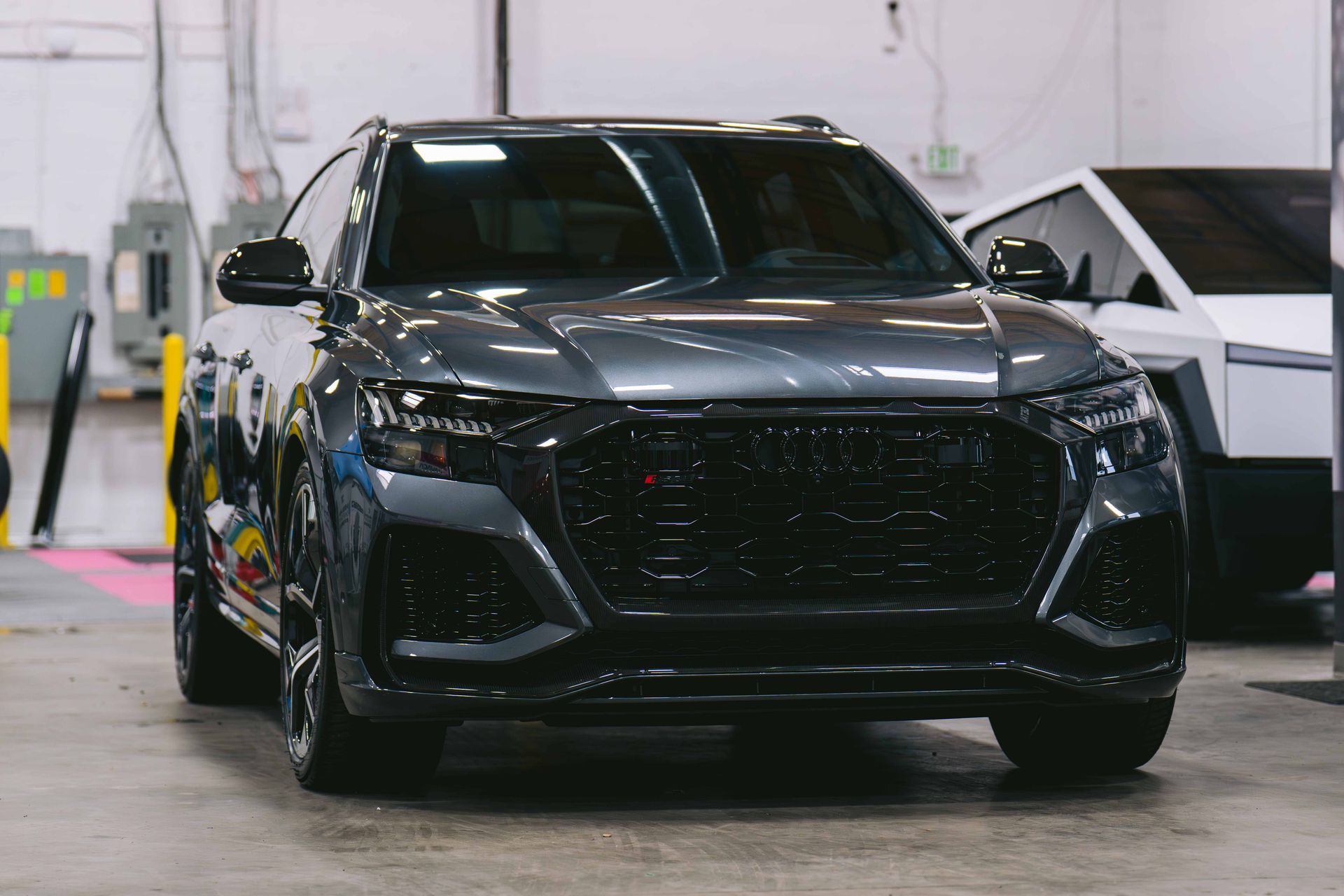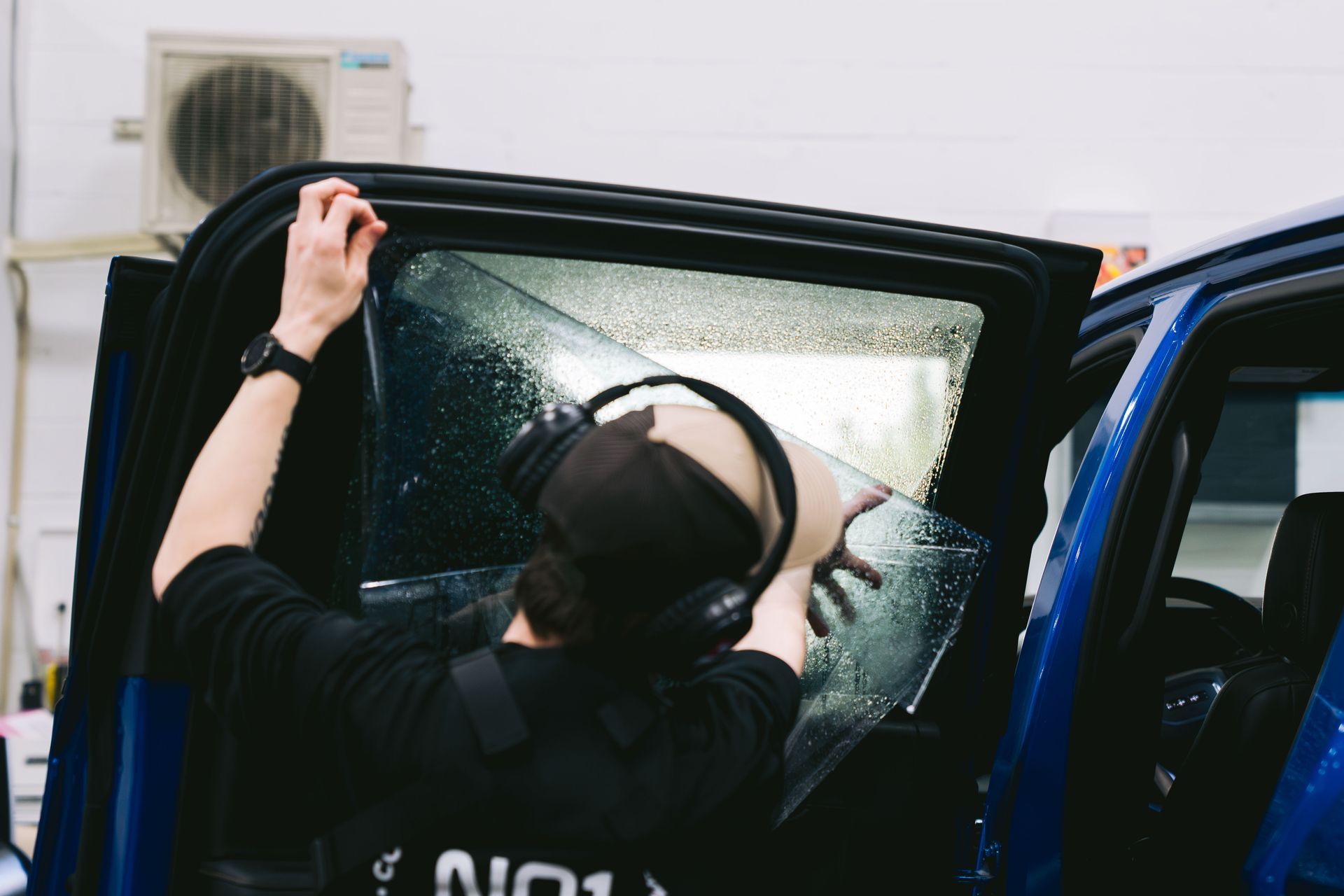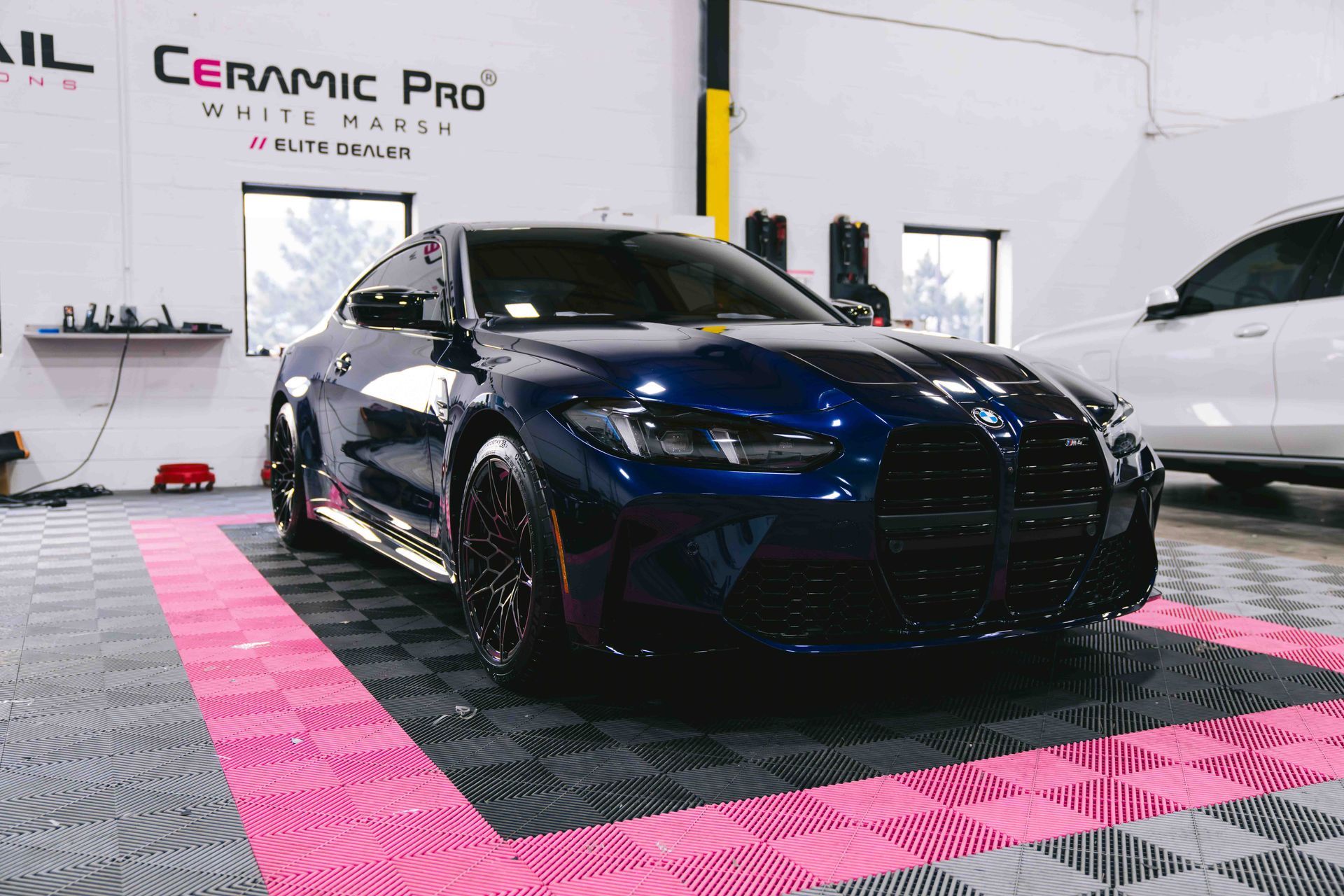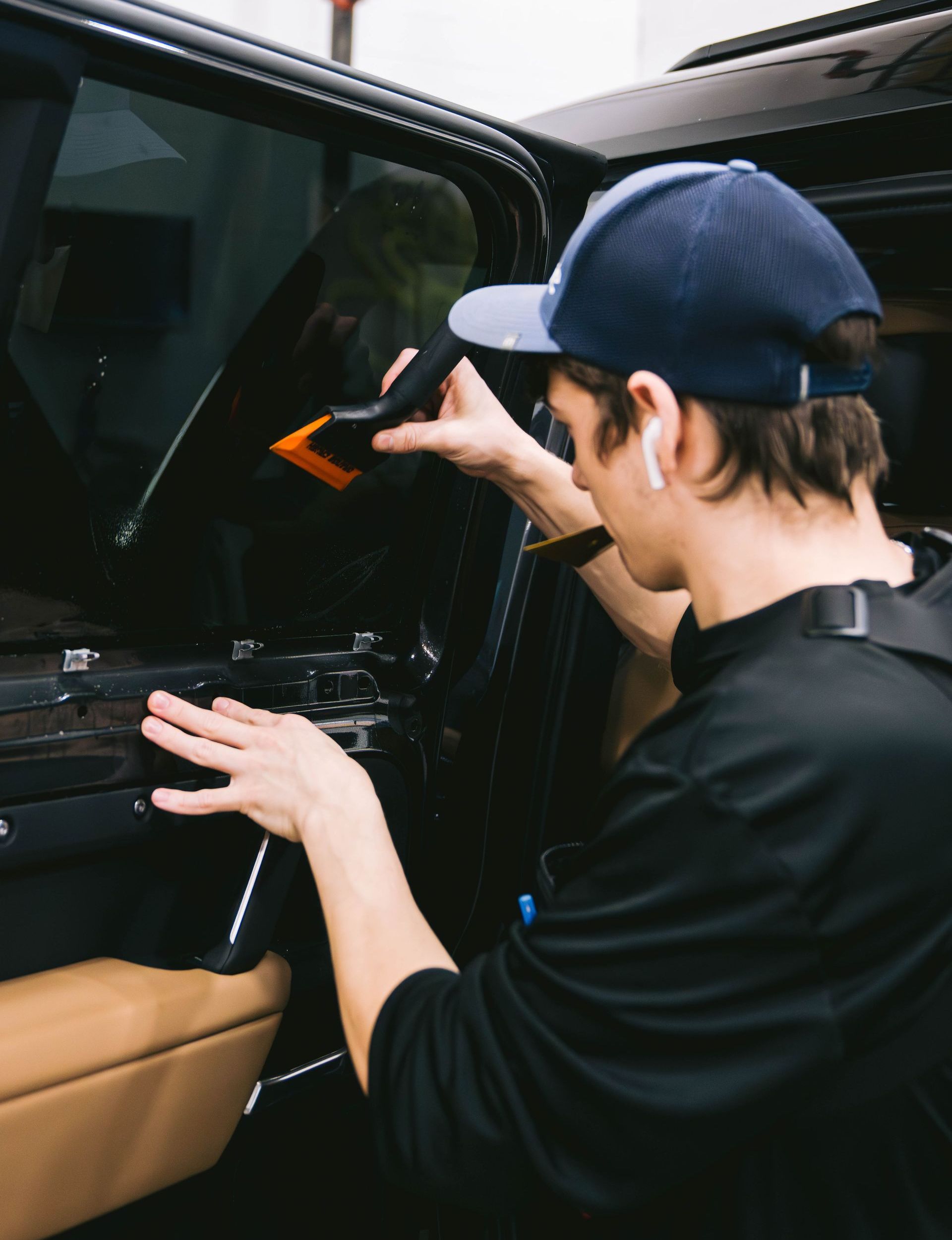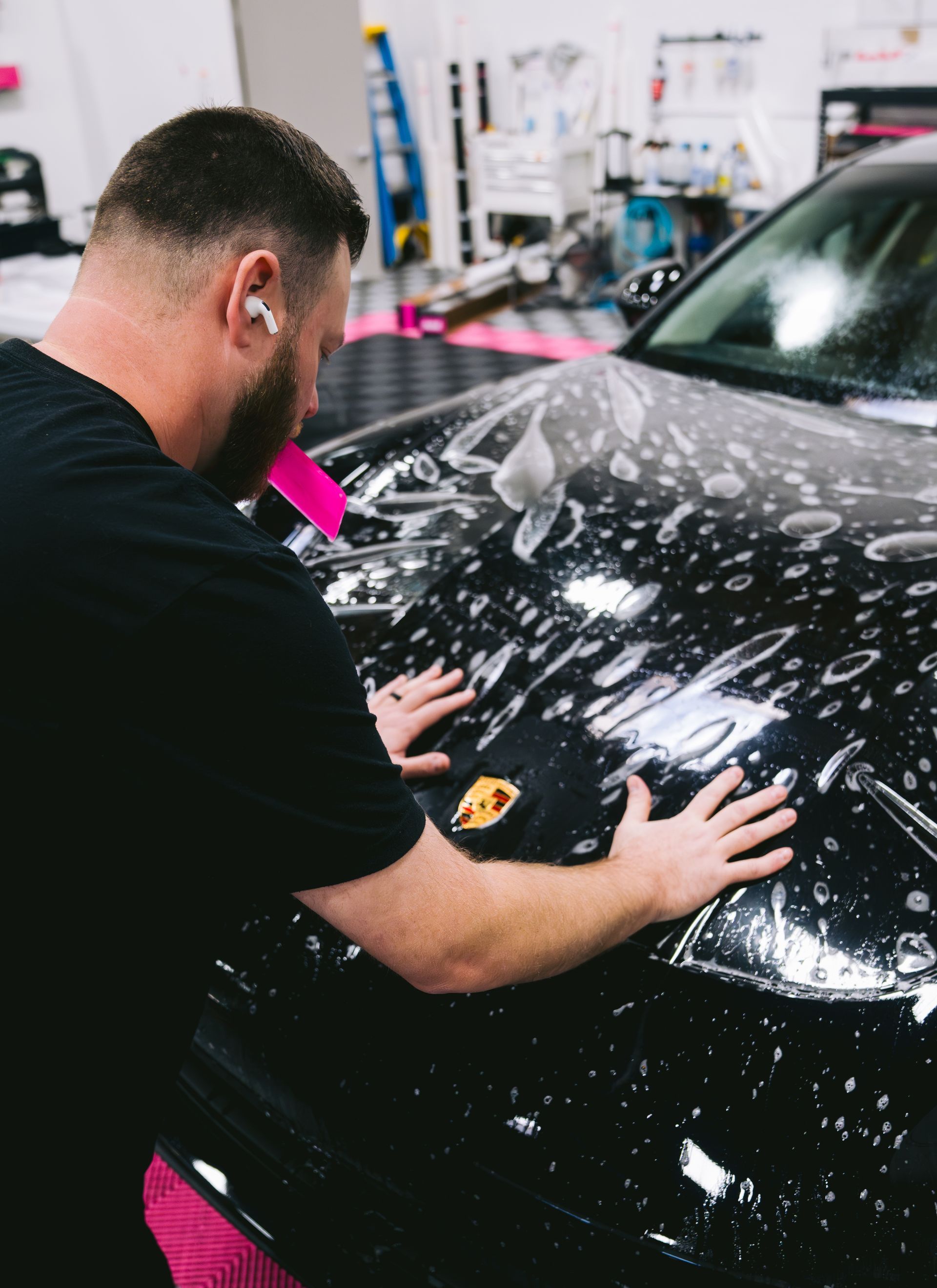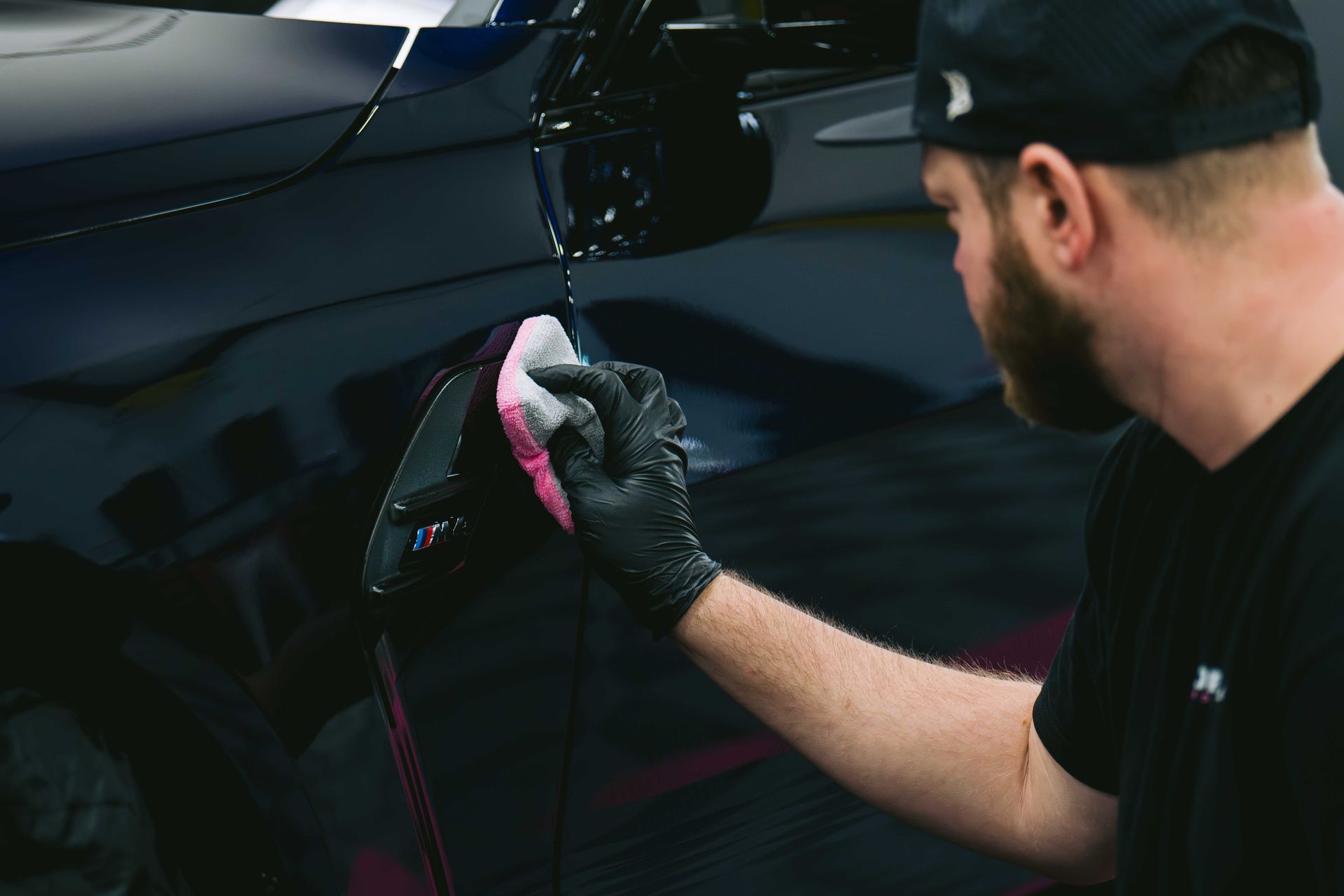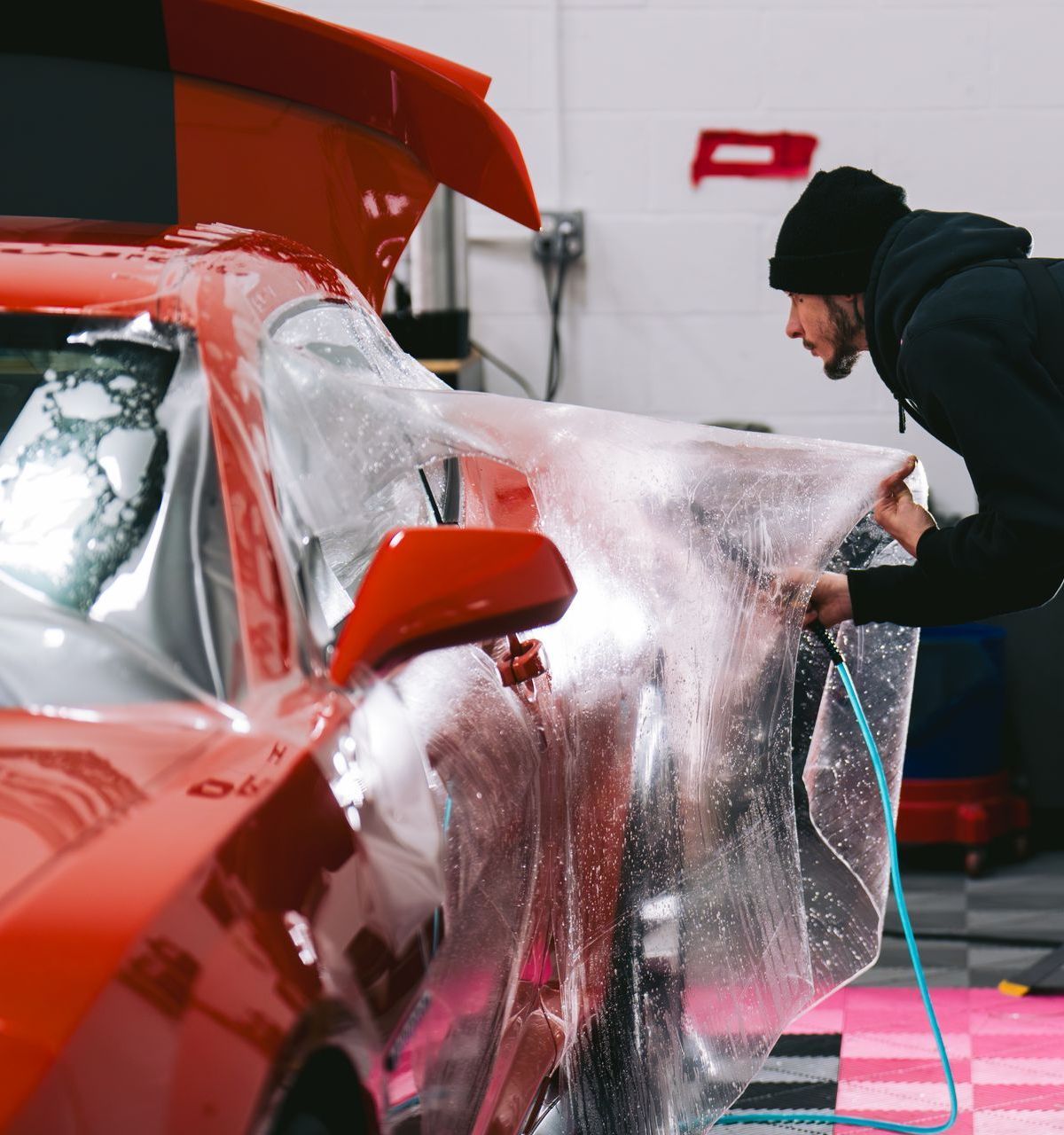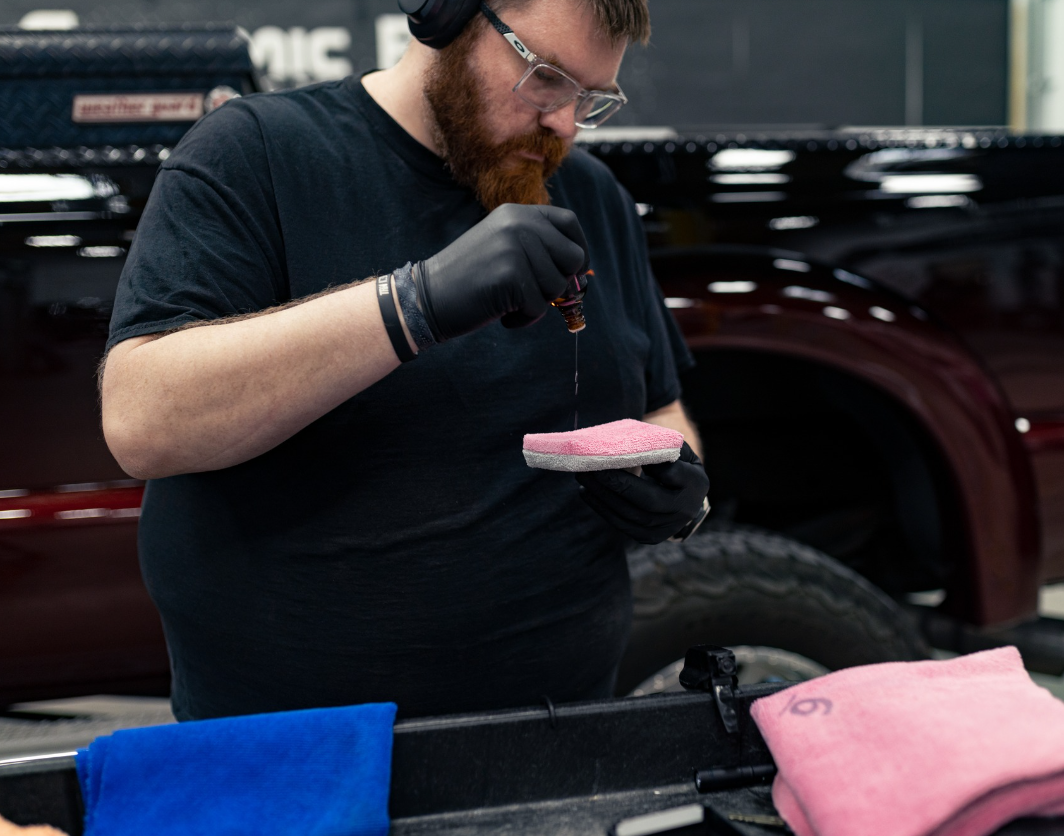Why DIY Paint Protection Film Is A Bad Idea: Benefits of Professional PPF Installation
DIY application of paint protection film carries the risk of a less-than-perfect result. A novice hand may end up with unsightly bubbles or misalignments, diminishing the overall effectiveness and aesthetic appeal of the PPF. Even more surprising is the fact that these minor faults could potentially lead to costly repairs down the line. It's not just about what you see on the surface! With this in mind, doesn't getting a pro handle seem like a better idea?

The Downside of DIY Paint Protection Film
While the allure of a DIY job might seem like a cost-effective solution, it does come with its own set of challenges and potential pitfalls. Let's explore two major drawbacks:
Improper Installation
One critical issue with DIY film application is the risk of improper installation. Without the expertise and precision of a professional installer, there's a high probability of encountering bubbles, creases, or misalignments during the application process.
These imperfections not only compromise the aesthetic appeal of the film but also impact its overall effectiveness. Bubbles and creases may interfere with the film's ability to create a seamless barrier against environmental contaminants, while misalignment can lead to uneven coverage, leaving certain areas exposed to potential damage.
Product Incompatibility
Choosing the right type of film is crucial for ensuring optimal adhesion and long-term protection. However, without professional guidance, individuals might inadvertently select a film that is incompatible with their vehicle's specific needs. This can result in poor adhesion and premature peeling of the film.
When the film doesn't adhere properly to the surface, it leaves the vehicle's paint vulnerable to a range of potential damages, negating the very purpose for which the protective film was intended. Moreover, using an incompatible product may not provide the desired level of protection against common hazards such as road debris, abrasions, or UV exposure.
While the idea of applying PPF at home may seem appealing at first glance, these significant downsides must be carefully considered. The potential risks associated with suboptimal applications far outweigh any perceived cost savings. Therefore, entrusting this task to experienced professionals ensures a seamless and effective protective film installation that safeguards your vehicle's exterior for years to come.
With a solemn understanding of the perils that often accompany DIY ventures of this nature, let's now proceed to comprehend how poor-quality film can wreak havoc on your vehicle's appearance and integrity.
Impact of Poor-Quality Film on Vehicle
When it comes to safeguarding your vehicle, the use of low-quality or incorrectly installed paint protection film (PPF) can actually cause more harm than good. Let's delve into some of the significant downsides that can result from subpar PPF.
Discoloration
One of the most noticeable drawbacks of low-quality PPF is discoloration. Inexpensive films may deteriorate over time, leading to a change in color that can make your vehicle's exterior appear aged and unattractive. This undermines the very purpose of using PPF—to maintain and safeguard your vehicle's appearance. Not only does this detract from the vehicle's aesthetic appeal, but it also diminishes the protective benefits of the film against UV rays, stone chips, and other environmental factors that could damage the underlying paint.
Reduced Protection
In addition to discoloration, low-quality paint protection films offer reduced protection against various elements that can affect the vehicle's exterior. UV rays, which can cause paint fading and deterioration, are not effectively blocked by inferior PPF. This means that exposure to sunlight could lead to a reduction in the vibrancy and luster of your vehicle's paintwork, ultimately diminishing its overall value. Furthermore, inadequate or improper installation may compromise the film's ability to shield the surface from potential damage caused by stone chips, scratches, and other debris encountered while driving.
The consequences of low-quality or incorrectly installed PPF extend beyond cosmetic issues; they directly impact the longevity and overall condition of your vehicle, potentially leading to costly maintenance and decreased value over time. Quality has a lasting influence on both appearance and function when it comes to safeguarding your valuable asset.
True Cost of DIY PPF
Many people are drawn to the idea of saving money by installing paint protection film themselves. It seems like a great idea at first—you buy a kit, watch some videos, and get to work. But there’s a lot more to it than just that. Let’s break down why going the DIY route might not be such a bargain in the long run.
Initial Savings, Long-term Costs
While the appeal of saving money up front with a DIY kit is strong, it's important to consider the long-term costs. DIY paint protection film kits can seem cost-effective at first, but expenses from premature PPF replacement or repairs can outweigh the initial savings.
If the film isn't installed perfectly or if it's of low quality, it won’t last as long as professionally applied film. This means you might have to replace it sooner than you would have liked, leading to additional costs that can add up quickly. Moreover, low-quality films may not offer the same level of protection as professional-grade ones, leaving your car vulnerable to damage and reducing its overall value.
When you think about it this way, choosing DIY over professional installation could end up being more expensive in the long run; what seemed like an initial saving might turn into unnecessary additional costs.
Labor and Time Investment
DIY PPF installation demands meticulous effort and time, often leading to subpar results that require professional correction.
Installing PPF is delicate and demanding work. Achieving a seamless, bubble-free application requires precision and expertise that often come with professional experience. Without the necessary skills and equipment, DIY installers may struggle to achieve the same level of finish as professionals.
Beyond that, considering one's own time as an investment is equally important. The hours spent researching, applying, and potentially rectifying mistakes could be more profitably spent elsewhere. Overcoming the challenges inherent in PPF installation requires both finesse and time—a luxury to most car owners who are better off enjoying their vehicle rather than struggling with complicated installations.
While DIY paint protection film kits may seem like a cost-effective solution initially, the potential for long-term costs and labor investment raises questions about their actual economy and effectiveness compared to professional installations. Learn more about the actual
cost associated with PPF!
Professional Paint Protection Film Installation
When you opt for
professional installation of paint protection film, you're not just choosing convenience; you're selecting expertise and quality assurance that DIY installations simply can't match. Here’s why professional installation is essential:
Skilled Application
Professional technicians possess the expertise to apply PPF evenly and without imperfections. Even the smallest speck of dirt trapped under the film during application can lead to unsightly bumps or bubbles, ruining the sleek finish you were aiming for. Their skill ensures that the film is flawlessly applied, providing an invisible protective layer over your vehicle's paint.
Quality Assurance
Professional installers utilize high-quality materials, warranting superior protection and durability for the vehicle's paint. This means that your investment in PPF will not only serve its purpose but also withstand the test of time. Professional-grade PPF offers numerous benefits, such as resistance to discoloration, yellowing, and damage caused by environmental factors like UV rays and harsh weather conditions.
It’s important to note that a professional installer's access to industry-grade equipment and specialized tools makes a world of difference in achieving a flawless finish. Their hands-on experience minimizes the risk of errors that could occur during the cutting and shaping processes, which determine how well the film fits your vehicle's specific contours.
On top of that, professional installation often comes with warranties that provide peace of mind, as any imperfections or issues with the film can be addressed under this coverage. Remember, this isn’t just about aesthetics; it’s about ensuring your vehicle is safeguarded against environmental damage, rock chips, and scratches. The PPF should essentially act as an invisible shield, preserving your car's paint in pristine condition.
Understanding these key aspects highlights why opting for professional installers is pivotal in ensuring a seamless and long-lasting protective film application on your vehicle's surface.
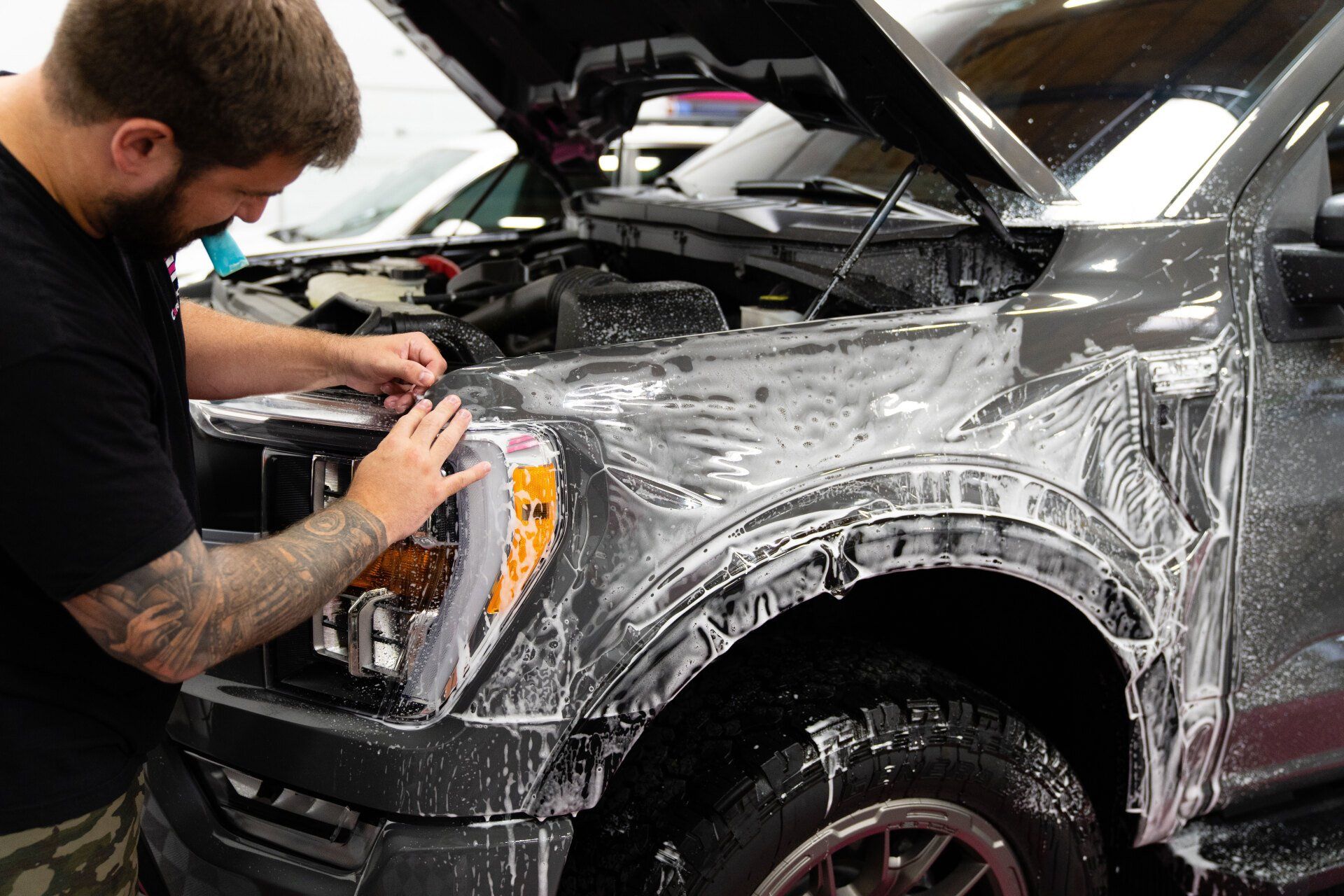
Ensuring Product and Service Qualities
When considering paint protection film (PPF) for your vehicle, critical factors must be taken into account. The first is superior film quality. A vehicle's aesthetics and longevity hinge significantly on the PPF brand and its protective properties. We recognize this crucial aspect and meticulously select top-tier PPF brands renowned for their extensive protective capabilities.
The use of industry-leading PPF brands forms the bedrock for exceptional maintenance of your vehicle's exterior, providing a sturdy shield against road debris, UV rays, and other environmental hazards. This not only preserves the aesthetics of your vehicle but also enhances its overall value by safeguarding the paintwork from wear and tear. It's imperative to opt for PPF options that offer reputable warranties, ensuring peace of mind that your investment is thoroughly safeguarded.
Reliable Installation Service
Equally pivotal to the quality of the film itself is the expertise behind its installation. Professional installation services ensure reliable installation, mitigating the risk of DIY pitfalls that could compromise the film's effectiveness. Our seasoned team at Detail Solutions prides itself on meticulous and seamless PPF installation.
Expert installation safeguards your investment in PPF by addressing specific concerns related to misalignment, air pockets, or suboptimal adhesion. These issues can arise from inadequate surface preparation or incorrect application techniques during DIY installations. Entrusting this task to professionals ensures an impeccable finish and uncompromised protection for your vehicle.
The combination of superior film quality and reliable installation services assures that your vehicle receives top-notch protection and maintains its pristine appearance for years to come. Don't settle for anything less when it comes to preserving the aesthetic appeal and longevity of your vehicle!
Advantages of Professional PPF Application
When it comes to protecting your vehicle with Paint Protection Film (PPF), professional installation offers numerous benefits that DIY methods may not deliver. Let’s explore a couple of key advantages and understand why opting for professional applications is essential.
Enhanced Aesthetic
One of the immediate advantages of professional PPF application is the enhancement of your vehicle's aesthetic appeal. When installed by professionals, the PPF is seamless and bubble-free, maintaining the original finish of the vehicle. Unlike amateur installations that may leave behind imperfections or bubbles, professional application ensures a smooth and flawless appearance. This means that your vehicle not only stays protected but also retains its pristine look, thanks to the expert application technique.
Extended Durability
In addition to aesthetic improvements, professionally installed PPF provides extended durability and long-term protection. This protective film shields your vehicle's paint from external factors, such as road debris, UV exposure, and environmental contaminants. Moreover, it helps maintain the resale value and appearance of the vehicle by preserving the pristine condition of the paintwork over an extended period of time.
By understanding these
key advantages of PPF, it becomes evident that professional installation isn't just about putting a protective film on your vehicle; it's about enhancing its aesthetic appeal, ensuring long-lasting protection, and preserving its value in the long run.
Assessing the Investment: Is PPF Worth It?
When considering adding paint protection to your car, cost can be a significant factor. It's understandable to question whether the investment in professional PPF installation is truly worth it. Let's break down the primary ways that professional PPF installation proves its worth.
Prolonged Paint Protection
Just visualize your vehicle navigating through a variety of harsh conditions—weather, road debris, and environmental hazards. These can all leave unsightly marks on your car. Imagine professional PPF standing strong like a resilient shield, safeguarding your car's paint from all these assaults. Essentially, it’s similar to wrapping your car in protective armor.
As a result, you get to savor a vehicle that still looks as good as new even after years of use. Since the film takes the hit instead of the paint, you're reducing potential touch-ups or full-on repainting in the future. In essence, a professional PPF is an investment in preserving your pristine vehicle condition and ultimately saving you from frequent repair costs.
Residual Value
We’ve all heard it said that 'first impressions are everything', and this rings true for vehicles as well. A car with clear, shiny paint is often seen as well-maintained and can command a higher price than cars with chipped or faded paint.
Professional PPF ensures that your car maintains its sleek appearance for an extended period of time. When the time comes to sell or trade-in your vehicle, its improved aesthetics and long-lasting protection play a critical role in maintaining its residual value. While professional PPF installation necessitates an initial investment, it’s one that can potentially save you money over time by avoiding frequent touch-ups and escalating repair costs while also ensuring that your vehicle holds its value longer when it comes time to part ways with it.
Final Words
In conclusion, professional PPF installation may require an initial investment; however, it could possibly save you money over time by avoiding frequent touch-ups and escalating repairs, while also ensuring that your vehicle holds its value longer when it comes time to part ways with it.
To learn more about professional PPF installation and its benefits, contact us at
Detail Solutions or call us at (410) 238-3000.

